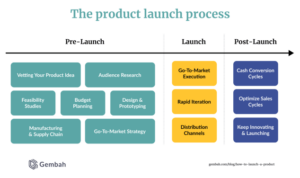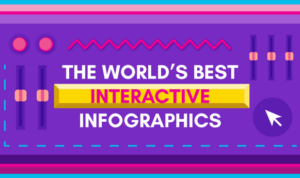Developing a Social Media Posting Schedule sets the foundation for boosting your online presence and connecting with your audience in a meaningful way. From understanding the importance to exploring effective strategies, this guide will help you navigate the world of social media scheduling with ease.
Importance of a Social Media Posting Schedule: Developing A Social Media Posting Schedule

In the fast-paced world of social media, having a consistent posting schedule is absolutely essential for maximizing your reach, engagement, and overall growth. Without a well-planned schedule, your content may get lost in the sea of posts, leading to decreased visibility and audience interaction.
Increased Engagement and Reach
A well-planned posting schedule can significantly boost your engagement and reach on social media platforms. By consistently sharing content at optimal times when your audience is most active, you can increase the likelihood of your posts being seen and interacted with. This regular presence also helps build brand awareness and loyalty among your followers, leading to higher levels of engagement over time.
- Regular posting helps maintain a strong connection with your audience, keeping them engaged and interested in your content.
- Consistent posting at strategic times can attract new followers and expand your reach to a wider audience.
- By adhering to a schedule, you can create anticipation among your followers, encouraging them to actively seek out your content.
Impact of Irregular Posting
On the flip side, irregular posting can have a detrimental effect on audience retention and brand visibility. When your posting schedule is inconsistent, followers may lose interest or forget about your brand altogether. This can result in lower engagement rates, reduced reach, and a decline in overall brand visibility on social media platforms.
- Irregular posting can lead to a decrease in organic reach, as algorithms favor consistent and active profiles.
- Audience members may unfollow or disengage with your brand if they perceive your content as sporadic or unreliable.
- Inconsistent posting may hinder your ability to establish a recognizable brand identity and maintain a loyal following.
Factors to Consider When Developing a Posting Schedule
When creating a social media posting schedule, there are several key factors that need to be taken into consideration to ensure maximum engagement and reach with your target audience.
Aligning Posting Times with Target Audience Demographics and Behaviors
It is crucial to understand the demographics and behaviors of your target audience to determine the best times to post on social media platforms. Factors such as age, location, and occupation can influence when your audience is most active online. By aligning your posting times with when your audience is most likely to be online, you can increase the visibility and engagement of your posts.
- Utilize analytics tools to track when your audience is most active on social media.
- Experiment with different posting times to identify the optimal times for engagement.
- Consider time zone differences if you have a global audience.
Significance of Content Variety and Frequency
In addition to posting at the right times, the variety and frequency of your content also play a crucial role in maintaining audience interest and engagement. Posting a mix of content types, such as images, videos, and text posts, can help keep your audience engaged and prevent monotony.
- Rotate between different types of content to keep your feed fresh and engaging.
- Maintain a consistent posting frequency to stay relevant in your audience’s feed.
- Monitor engagement metrics to determine which types of content resonate most with your audience.
Tools and Resources for Planning a Social Media Posting Schedule

In the world of social media management, having the right tools and resources can make a huge difference in creating a successful posting schedule. Let’s take a look at some popular options and how you can effectively utilize them.
Social Media Scheduling Platforms
- Hootsuite: Hootsuite is a comprehensive social media management platform that allows you to schedule posts across multiple social networks, track analytics, and engage with your audience.
- Buffer: Buffer is another popular scheduling tool that offers a user-friendly interface, advanced scheduling options, and detailed analytics to help you optimize your posting schedule.
- Sprout Social: Sprout Social is known for its robust social media monitoring and scheduling features, making it a great choice for businesses looking to streamline their social media efforts.
Tip: When choosing a scheduling platform, consider factors such as the number of social networks you manage, the volume of content you post, and the level of analytics and reporting you require.
Tips for Effective Scheduling
- Plan ahead: Take the time to create a content calendar outlining your posting schedule for the week or month ahead.
- Use automation: Utilize the scheduling features of your chosen platform to automate the posting process and save time.
- Monitor engagement: Keep track of how your audience responds to scheduled posts and adjust your strategy accordingly to maximize engagement.
Strategies for Optimal Social Media Posting Times
In the world of social media, timing is everything. Knowing the best times to post on different platforms can make a significant impact on your engagement levels. Leveraging analytics and insights to determine the optimal posting times is crucial for reaching your audience effectively. Here are some tips on experimenting with posting schedules to find the most effective timing for your specific audience.
Best Times to Post on Different Social Media Platforms, Developing a Social Media Posting Schedule
- Facebook: Weekdays between 9 am to 2 pm are considered optimal for maximum reach and engagement.
- Instagram: Posting during lunchtime (11 am to 1 pm) and evenings (7 pm to 9 pm) usually yields better results.
- Twitter: Tweeting in the early afternoon, around 1 pm to 3 pm, and evenings between 6 pm to 9 pm tend to work well.
- LinkedIn: Weekday mornings, specifically between 7 am to 9 am and evenings from 5 pm to 6 pm, are recommended for posting.
Leveraging Analytics and Insights for Optimal Posting Times
Analytics tools like Facebook Insights, Instagram Insights, Twitter Analytics, and LinkedIn Analytics can provide valuable data on when your audience is most active. Use this information to refine your posting schedule for better engagement.
Tips for Experimenting with Posting Schedules
- Try posting at different times and days to see which ones generate the most interactions.
- Monitor the performance of your posts using analytics and adjust your schedule accordingly.
- Consider time zone differences to cater to a global audience and maximize reach.






